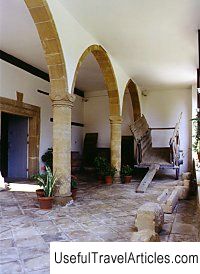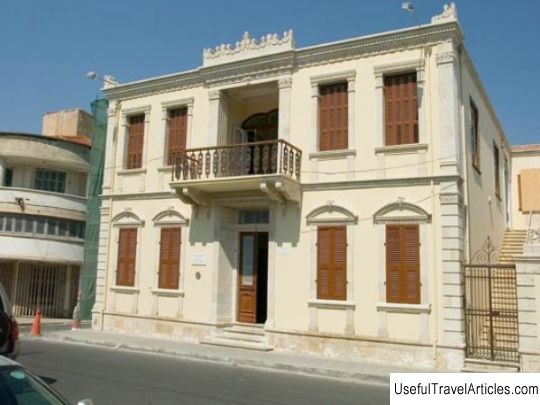Cyprus Folk Art Museum, Nicosia Resort
Rating: 7,8/10 (600 votes)  The Museum of Folk Art gives tourists an excellent opportunity to feel the national characteristics and ethnic character of Cypriots, the peculiarities of local life. In December 1950 the museum was opened. The creation of the museum was initiated by the Society of Cypriot Researchers, whose leader was A. Diamantis (Cypriot artist). Initially, a room in the residence of the archbishop was allocated for the museum of folk art Cyprus. Here 457 exhibits were exhibited (national clothes, jewelry, wooden sculpture, and others). The exhibits were collected by the organizers of the museum and sent by the inhabitants of the island. But in 1961 the Cypriot archbishop moved to a new residence, and through the efforts of members of the Society of Cypriot Explorers, the old building passed to them. Visitors begin to get acquainted with the exhibits before entering the museum. On the square in front of the entrance there is a press for extracting olive oil and a large vessel made of red clay. The first hall of the museum displays looms, there are four of them, and each has its own purpose: 1. Loom for sewing material for men. 2. Loom for fabric with patterns. 3. Loom for the production of fabric for sewing bags. 4. Demonstration of samples of a wide variety of fabrics (cotton, linen, silk, wool) The sight of museum visitors is surprised by the variety of linen fabrics, with such predominant colors as gray, red, yellow, light green, dark blue (traditional colors for Cypriots). In the museum, a large place is given to national clothes, as the locals paid special attention to them, which was reflected in the color of the clothes. According to Cypriots, the color of clothing reflects their temperament and character. Clothes from different eras are presented here. The museum also exhibits objects of applied art. Wood carving is very common in Cyprus. On the products presented in the museum, tourists can see patterns traditional for Cyprus: peach trees, cypresses, birds, lions. Ceramics are also presented in the museum: clay vessels for oil and wine, household utensils, decorative items. Household items contained in the museum , tools, furniture, We also recommend reading Cathedral of St. John the Evangelist in Cyprus, Nicosia resort Topic: Cyprus Folk Art Museum, Nicosia Resort. |




